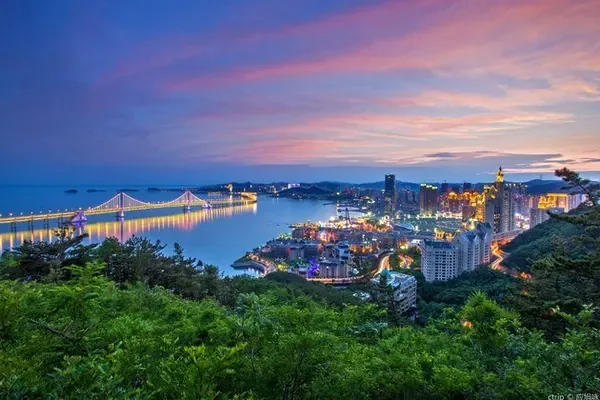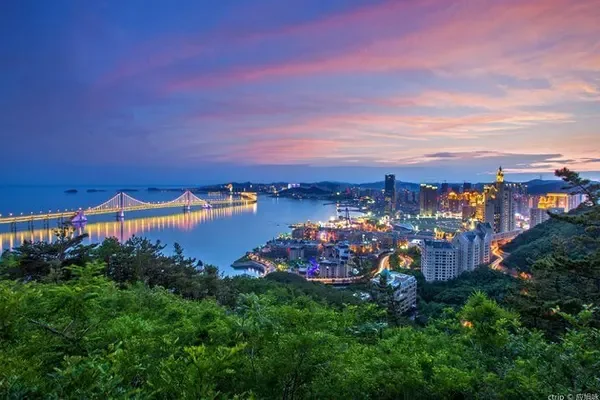What mountains do you need to challenge on the Sichuan-Tibet line? This section of the Sichuan-Tibet line is the most beautiful and exciting section of the National Highway 318. The scenery along the way is changeable, and you need to climb and challenge many mountains.
NO1: Erlang Mountain
Erlang Mountain is the first mountain that needs to be crossed on the 318 Sichuan-Tibet Line. The saying "Erlang Mountain that scares people to death, Zheduo Mountain that overturns people to death" is enough to explain the danger of Erlang Mountain. Although Erlang Mountain is the lower mountain among the high mountains on the 318 Sichuan-Tibet Line, the mountain road is difficult to walk and it is prone to heavy fog, so it is still challenging.
Altitude: 2170 meters
Location: In Tianquan County, Sichuan Province, it is located 50 kilometers west of Tianquan County and 30 kilometers away from Luding County.
NO2: Zheduo Mountains
"Zheduo" means bending in Tibetan, and the so-called eighteen turns of the mountain road seem to be used to describe it. Zheduo Mountain is the first pass in Kangba and the first high mountain pass that needs to be crossed on the Sichuan-Tibet line.
Altitude: 4298 meters
Location: Within the territory of Kangding City, Ganzi Prefecture, Sichuan Province
NO3: Mount Gaoersi
If Zheduo Mountain is the first pass of Kham, then Gaoersi Mountain is the second pass of Kham. Gaoersi Mountain can see the grasslands, mountains and rivers, and enjoy the natural scenery of plateau clouds and mists. However, I heard that there were robbers in Gaoer Temple Mountain, but when I passed by, I found that this seemed to be just a rumor, and it was very safe and smooth.
Altitude: 4412 meters
Location: Ganzi Tibetan Autonomous Prefecture, Sichuan Province, located between Xindu Bridge and Yajiang on National Highway 318 Sichuan-Tibet Line.
NO4: Scissors Bend Mountain
Jianziwan Mountain got its name because it climbed over its post road and turned into a scissors-shaped bend. The Jianziwan Pass, which is traversed by the Sichuan-Tibet Highway, is one of the highest passes of the 318 National Highway in the Kham area. Every year at the beginning of the new year, people come here to hang prayer flags, and people passing by here sprinkle five-color wind horse paper, use the wind to flutter the prayer flags and wind horse paper, and convey the language of prayer to the gods.
Altitude: 4659 meters
Location: Jianziwan Mountain is located on the west side of Xianggezong Township, Yajiang County, 318 Sichuan-Tibet Line, between Yajiang and Litang.
NO5: Kazila Mountain
Due to the higher altitude of Kazila Mountain, the trees are even rarer, mainly alpine meadows. When crossing Kazila Mountain, the fog began to dissipate, and the clouds in the sky began to increase. Sometimes they are pure and white, and sometimes they are dark and psychedelic.
Altitude: 4718 meters
Location: Located at the border of Litang County and Yajiang County, Sichuan Province.
NO6: Haizi Mountain
The average altitude of Haizi Mountain is 4,500 meters, and the highest peak, Guoyinri, is 5,020 meters above sea level. There are 1,145 big and small Haizis in total. Its scale density is unique in our country, hence the name Haizi Mountain. Among them, the most famous Haizi is the Sister Lake. Many friends who cross the 318 Sichuan-Tibet Line will take a group photo at the Sister Lake.
Altitude: 4500 meters
Location: Located between Litang and Daocheng counties.
NO7: Zongla Mountain
The Fengma flag on the top of Zongbala Mountain, which is located on the Sichuan-Tibet line of National Highway 318, flutters with the wind, and you will reach Mangkang after crossing Zongbala Mountain.
Altitude: 4150 meters
Location: within the territory of Mangkang.
NO8: Mount Lau
Mount Lawu is a gentle mountain pass in Mangkang, Tibet, National Highway 318 of the Sichuan-Tibet Highway. On the top of this mountain, there is a relatively spectacular array of prayer flags. This is the largest one I have seen so far, occupying a whole mountain. The elevation of Laowu Mountain Pass is not high, only 4338 meters, but if you stand on the pass, if you have the eyes of the sky, you can look down on the Jinsha River and the Lancang River.
Altitude: 4376 meters
Location: Located in Chamdo, Tibet Autonomous Region.
NO9: Jueba Mountain
Jueba Mountain is also called Jiaoba Mountain. Jueba Mountain is one of the famous dangerous sections in the Hengduan Mountains. The 30-kilometer winding mountain road and the relative height difference of nearly 2,000 meters make Jueba Mountain the most difficult and time-consuming mountain to climb on the Sichuan-Tibet line. The road extends on the cliff. There are no road signs on the guardrails, and many places are forcibly excavated close to the mountain, with the cliffs on the top and the abyss on the bottom, which is daunting.
Altitude: 3930 meters
Location: Located in Batang in western Sichuan and Zuogong in eastern Tibet.
NO10: Dongda Mountain
Some people say that Dongda Mountain is the most difficult mountain on the Sichuan-Tibet line of National Highway 318, and there are reasons for it. The mountain road is no longer meandering, but a straight road leading to the front. It is slow and long, with no end in sight. This is Dongda Mountain, the longest and most lingering Sichuan-Tibet line. Dongda Mountain is the second highest pass on the southern Sichuan-Tibet line, and it is prone to high altitude sickness. Please bring anti-altitude sickness products.
Altitude: 5008 meters
Location: Within Zuogong County, Tibet.
NO11: Yela Mountain
After Yela Mountain crosses the pass from Bangda Town at 4120 meters, there is the famous "72 turns of Nujiang", also known as "Ninety-Nine Turns". Not to mention that these turns are sharp and steep, most of them are U-shaped turns. If you are not careful, the Nu River is waiting for you below. It is daunting and can be called a miracle on Chinese roads!
Altitude: 4658 meters
Location: In Basu County, Qamdo District.
NO12: Angela Mountain
The 4468-meter Anjula Pass is a bit surprising. Unlike the passes of many famous mountains and rivers, which are generally steep and undulating, with thousands of walls, the Anjiula Pass is surprisingly gentle. It is this seemingly inconspicuous Anjula Pass belonging to the Boshula Mountains, which is the watershed between the Nu River and the Yarlung Zangbo River. After crossing the pass, you will enter the Yarlung Zangbo River basin, where legends and myths grow, from the Nu River basin.
Altitude: 4468 meters
Location: Basu County, Qamdo Prefecture.
NO13: Sejila Mountain
Climb to the mountain pass at an altitude of 4728 meters (there will be altitude sickness, and the lack of endogenous oxygen should be prevented), and you can see the sunrise, the sea of clouds, the endless forest sea and the majestic majesty of Nanga Bawa Peak.
Altitude: 47280 meters
Location: Located in the east of Nyingchi County, Nyingchi Prefecture, Tibet Autonomous Region.
NO14: Mira Mountain
The last mountain to enter Lhasa is also the highest mountain on the Sichuan-Tibet line. Mount Mira at an altitude of 5018 meters, you need to pay attention to altitude sickness. This is the boundary mountain pass between Lhasa and Nyingchi, and also the watershed between the Niyang River system in the southeast and the Lhasa River system in the northwest. Over the Mila Mountain, the holy city of Lhasa will appear in front of you.
Altitude: 5013 meters
Location: Located in Gongbu Jiangda County.


